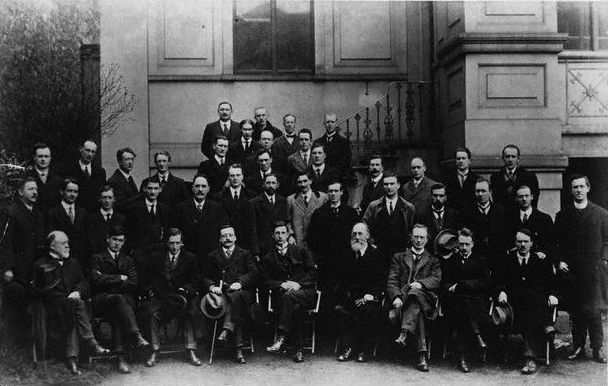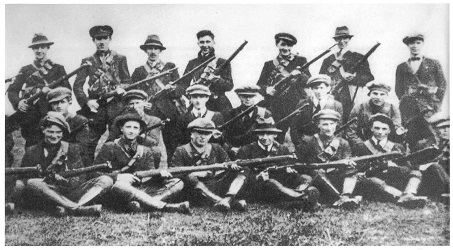Last month, we presented the circumstances that led up to the most defining moment in Irish history. They included growing nationalism, extending voting privilege to all men over 21 and women over 30 (from 701,475 registered in 1910 to 1,936,673 in 1918) and then, the UK General election on 14 December 1918. In the Irish part of that election, Sinn Fein won 73 of the 105 contested seats to the Irish Parliamentary Party’s 6 and Unionist’s 22. It was the last all-Ireland election; it was also the first to allow women to vote, the first to elect a woman (Countess Markievicz) to the British Parliament and it set the stage for the most defining event in Irish history.
Even before election results were announced on 28 December, allowing for absentee ballots, Sinn Fein learned of the upset and met on 19 December. They decided to abstain from taking their seats at Westminster when it convened; instead they would create an independent parliament of their own to be called Dail Eireann (Assembly of Ireland). While Sinn Fein was central to the establishment of the Dail, it was recognized that the Dail would need a distinct Republican character. Members were called ‘elected Republican Members’ and they met in private on 2 January to decide the format of their new body. At meetings held over the following weeks, the principles to guide the new Dail were agreed. On 7 January 1919, a republican pledge was signed by those present:
I hereby pledge myself to work for the establishment of an independent Irish republic; that I will accept nothing less than complete separation from England in settlement of Ireland’s claims; and that I will abstain from attending the English Parliament.

The address to the free nations was in accordance with the promised self-determination of small nations as a goal of the recent World War. The Declaration of Independence defined the aim of Dail Eireann, noting that the elected Representatives of the Irish people alone have power to make laws binding on the people of Ireland, and that the Irish Parliament is the only Parliament to which that people will give its allegiance. The Dail not only gave expression to the will of the people, but also (after April) commanded the allegiance of the army. This defining of principle was matched by practical affairs: the Dail did actually govern. Michael Collins, at the Department of Finance, effectively raised loans for the Republic; the Republican Courts operated with the support of the people who sought adjudication through them rather than from Crown officials and envoys and trade consuls were sent to America and the major countries of Europe. These activities, and more, were maintained even after Dail Eireann was banned by the Crown on 10 September 1919, along with Sinn Fein, the Gaelic League, the Irish Volunteers and Cumann na mBan. These activities ultimately strengthened Ireland’s claim to recognition as a self-governing state.
Then, as if to put an exclamation point on the new Dail, on the same day an unauthorized ambush of a gelignite transport was made by nine men of the Third Tipperary Brigade under Sean Tracey and Dan Breen in which two RIC were killed. It was the start of the War of Independence! Those men had decided on their own that it was time to bring the quest for independence to another level. They hoped that force would compel the British to grant Independence and they took the title by which they had been popularly referred to all along: the Irish Republican Army (IRA) and signaled the start of a new phase of Irish history. And it all happened just 100 years ago!
